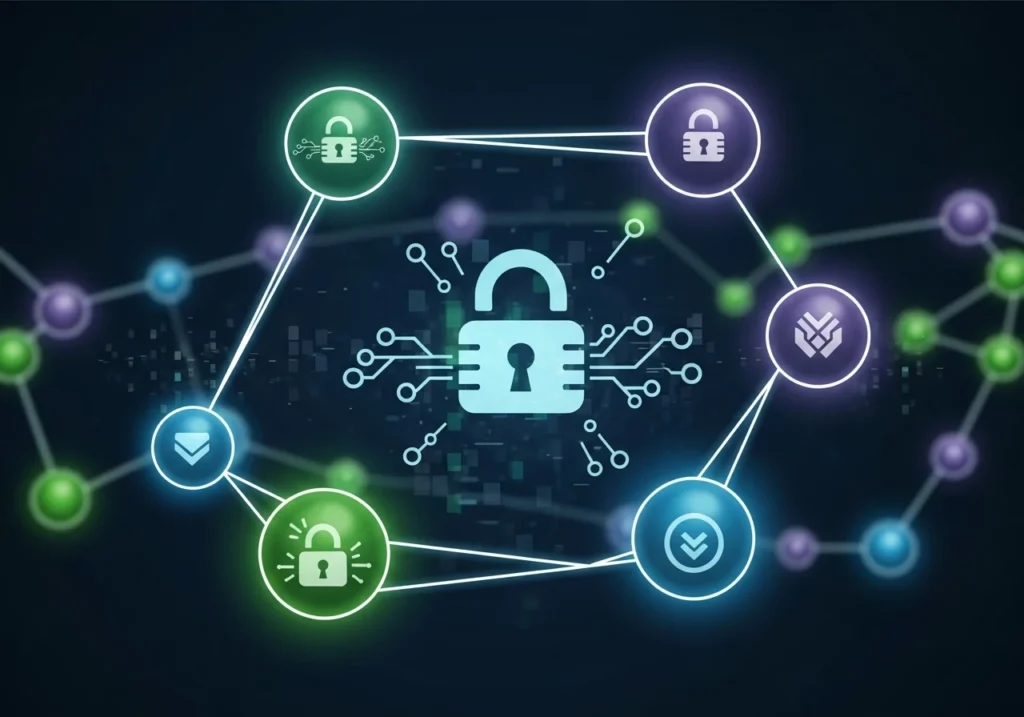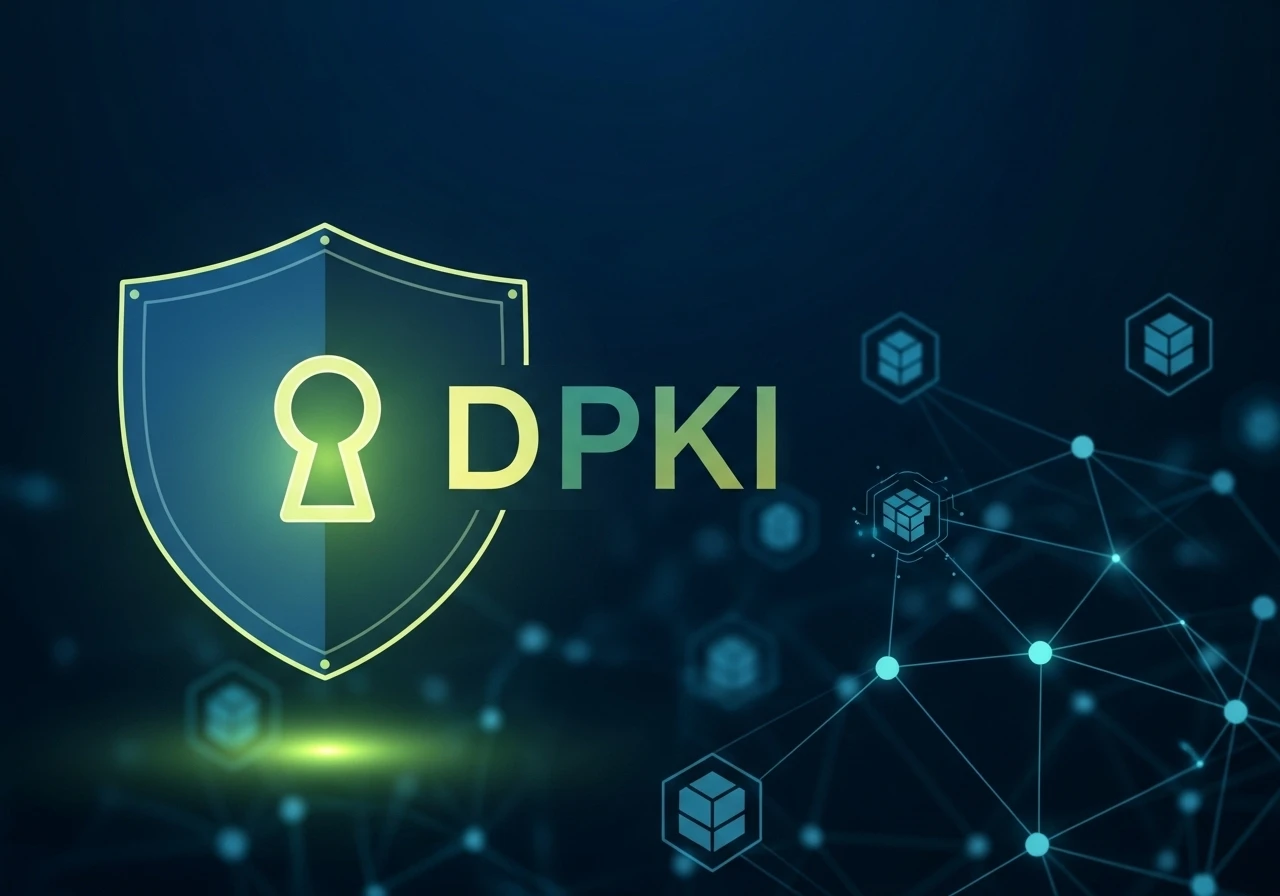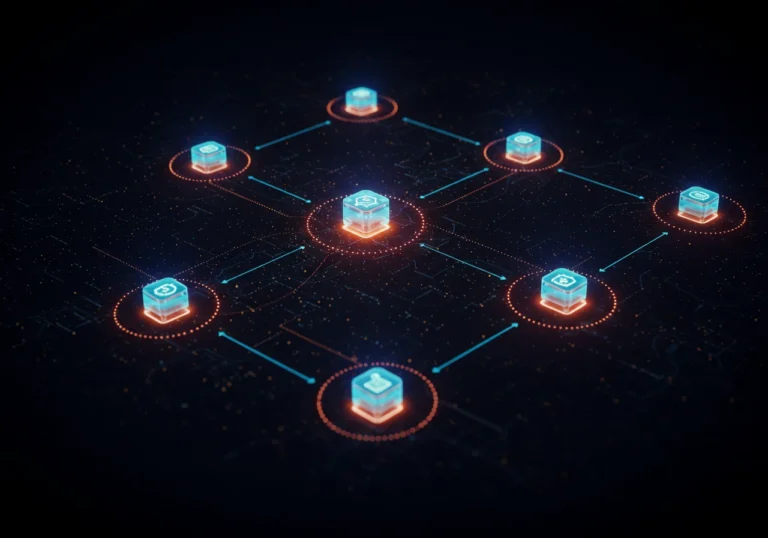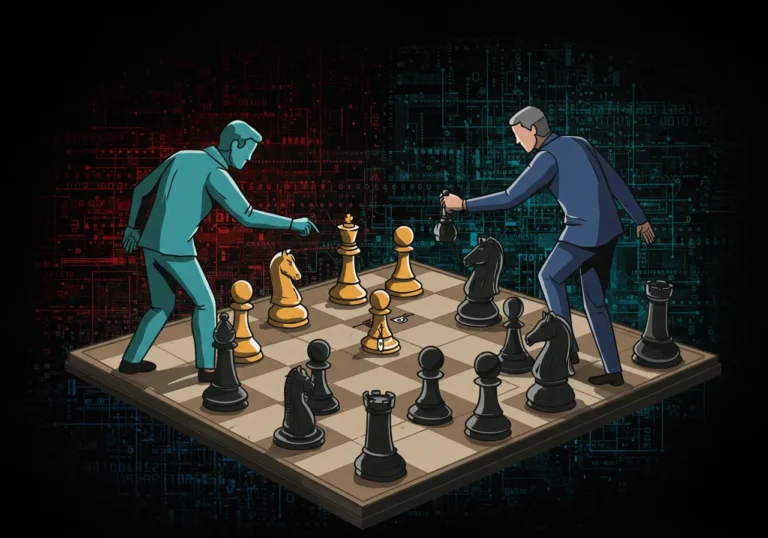Decentralized PKI (DPKI)
Table of Contents
What is Decentralized PKI?

Decentralized PKI (often shortened to DPKI) is a modern way to manage public keys and digital identities without relying on a single central authority. Traditional PKI (public key infrastructure) uses trusted Certificate Authorities (CAs) to issue digital certificates. DPKI spreads that trust across many participants and uses decentralized technology so no single point of failure exists.
Imagine you have a house key. In old systems, you would leave the spare with one locksmith. In decentralized systems, you might have multiple trusted friends who each hold a part of a code. No single friend can open the house alone. That extra step makes the whole system safer.
Why we need DPKI
We use the internet for everything — banking, health records, identity, and voting. That creates big targets for attackers. Traditional PKI has worked for years, but it has limits:
- Single points of failure mean a hacked CA can break trust for many people.
- Centralised control can be slow to adapt and may not suit global, peer-to-peer apps.
- Users often don’t control their own keys, which reduces privacy and choice.
DPKI offers a different path. It aims to make keys verifiable, portable, and resilient. People and devices keep control. No single authority can silent a whole system.
How DPKI works
You don’t need a doctorate to understand the basics. Here’s an easy picture:
- Keys and identifiers: Each user, device, or service has a pair of cryptographic keys. One key is private (kept secret), the other is public (shared).
- Decentralized ledger or registry: Instead of a single CA database, public keys are recorded on a decentralized registry — sometimes a blockchain or another distributed system.
- Proof and verification: When you want to prove your identity, you sign a message with your private key. The verifier checks the public key in the registry and confirms the signature is valid.
- Recovery and rotation: DPKI systems build in careful ways to recover or rotate keys if they are lost or compromised, without handing control to a central operator.
Think of this like a neighborhood noticeboard that everyone can verify. You pin your public key on the board. When needed, people check the board to confirm your signature. If you lose your key, a community-approved process helps you reset things.
Everyday benefits
- Less dependency on big companies: You don’t have to trust a single company to keep your identity safe.
- Greater resilience: Even if one participant is compromised, the system keeps working.
- User control: People and devices hold private keys and decide how to use them.
- Stronger privacy: DPKI enables selective sharing — prove what’s needed without exposing everything.
- Better for IoT and devices: Many smart devices need secure identities; DPKI scales to manage billions of them.
Imagine your smart lock, thermostat, and car all using DPKI. Each device can prove it’s genuine without phoning home to a single vendor. That’s safer and kinder to privacy.
Real-world examples and use cases
- Device identity (IoT): Factories and homes can authenticate devices without relying on vendor servers.
- Decentralized apps and wallets: Users control their keys, reducing stolen accounts on centralized platforms.
- Secure messaging and email: Keys published in a DPKI registry let you verify messages easily.
- Supply chain verification: Track origins and prove authenticity of goods using verifiable keys tied to items.
These are not future fantasies; pilots and small systems are already using DPKI ideas today.
Challenges
No system is perfect. DPKI faces real hurdles:
- Usability: Key management must be easy for ordinary people. Complex steps will stop adoption.
- Standards and compatibility: Different projects must agree on how to store and verify keys.
- Recovery without centralisation: If you lose access to your keys, the recovery method must be secure and not recreate central control.
- Regulatory clarity: Laws and regulations need to adapt to decentralized trust models.
- Scaling and cost: Decentralized registries must remain efficient and affordable as they grow.
These are solvable problems. Progress is steady, but care is needed to avoid replacing one fragility with another.
How to get started

If you are an everyday user:
- Learn the basics: know what a private key and public key are.
- Use reputable wallets and devices that support secure key storage.
- Keep backups for recovery, but store them safely and offline where sensible.
If you are a developer or IT lead:
- Prefer open standards and interoperable tools.
- Design recovery methods that are user-friendly and secure — social recovery, multi-signature, or hardware-based backups.
- Test at small scale and gather user feedback before broad rollouts.
Looking ahead | How DPKI might change things
The web is moving away from centralized silos. DPKI supports that shift by offering a security layer that is more aligned with decentralization, privacy, and user control. We may see:
- Wider adoption for device authentication in industries like energy, healthcare, and transport.
- New identity services that empower users and reduce vendor lock-in.
- Legal frameworks that treat verifiable decentralized credentials like official documents.
It’s not immediate, but steady adoption could make online life simpler and safer for all.
Quick conclusion
Security isn’t just technical. It’s about trust. People want systems that protect their privacy and give them control. Decentralized PKI is a practical way to build that trust into the very bones of internet identity. It helps us move from fragile, centralised keys to systems that are more fair and more robust.
If you’ve ever felt frustrated by passwords, identity checks, or worrying about a company holding your keys — DPKI aims to fix that. It’s a path toward a web where you hold more control and risk is shared, not concentrated.
In short
- Decentralized PKI (DPKI) distributes trust across a network rather than relying on a single authority.
- DPKI makes public keys verifiable, portable, and resilient.
- Key benefits: user control, stronger privacy, and better device authentication.
- Challenges include usability, recovery methods, and standardisation.
- Start small: test DPKI for device identity, messaging, or simple credentials.
FAQ
Q: Is DPKI the same as blockchain?
A: Not always. Many DPKI systems use blockchains or distributed ledgers as registries, but the core idea is decentralised control of keys. The underlying tech can vary.
Q: What happens if I lose my private key?
A: Good DPKI systems include recovery options like social recovery, multi-signature schemes, or secure hardware backups. Pick systems that explain recovery clearly.
Q: Will DPKI replace Certificate Authorities?
A: DPKI may change the role of traditional CAs, but transitions take time. Some hybrid models will likely coexist as adoption grows.
Q: Is DPKI only for tech companies?
A: No. While tech firms lead many pilots, DPKI benefits anyone who needs secure, private identity and device authentication.

Hello, I’m Edmilson Dias, founder of CoinBringer. I created this platform to guide people through the fast-moving world of cryptocurrency with clarity and safety. With years of research in blockchain and digital security, my goal is to translate complex topics into practical knowledge, offering reliable tutorials, safety insights, and guidance for both newcomers and experienced users.
Discover more from CoinBringer
Subscribe to get the latest posts sent to your email.







